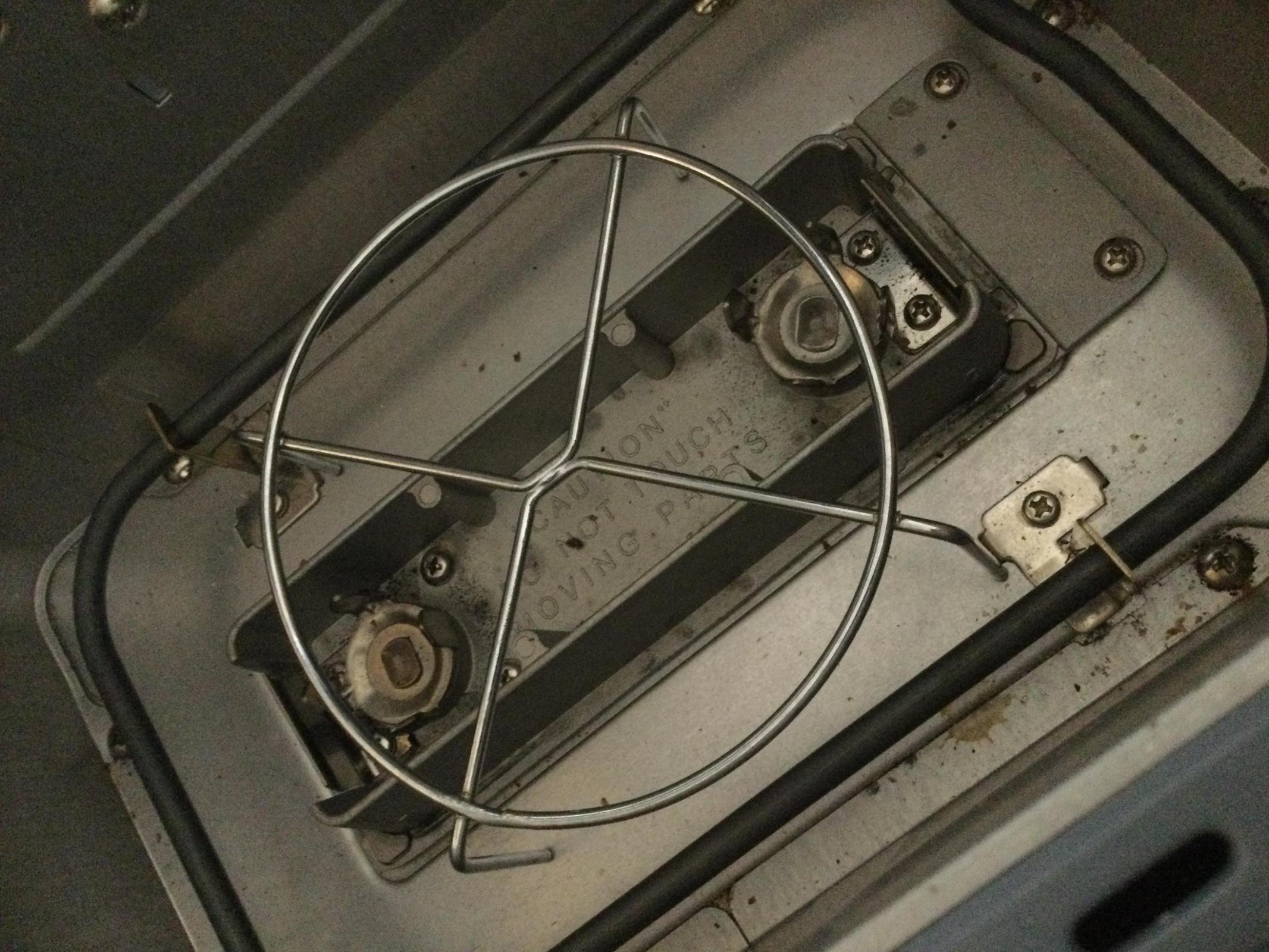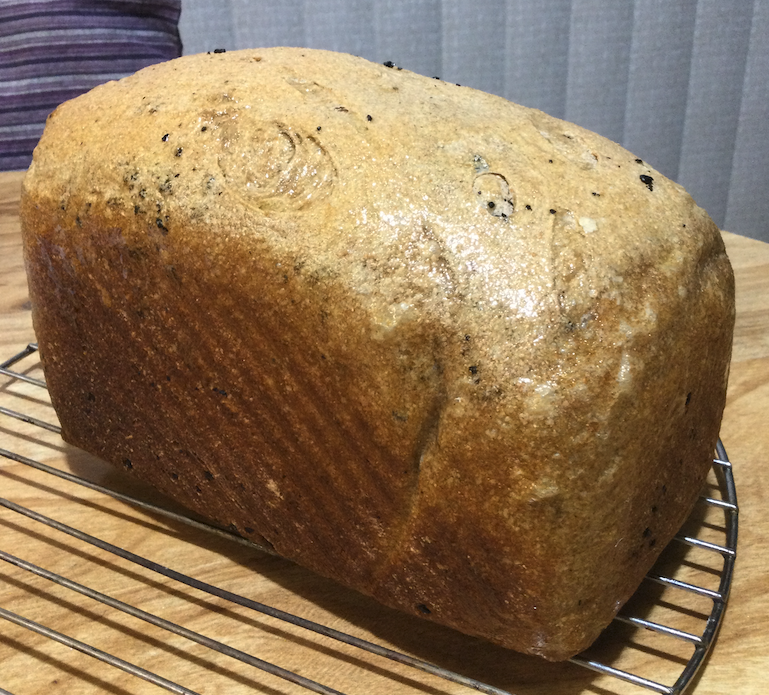Hello all,
I use bread machines for most of my loaf making because of some arthritis/inflammatory/time issues. I was gifted a lovely Zojirushi for Christmas and I am just beginning to home into some issues that have plagues me across all machines I have used.
I am beginning to get my bulk rise/proofing issues resolved, which is good. This machine allows for 'memory' courses so I have been able to program much shorter rises and eliminate the third rise altogether. My dough has always run away from me with proofing in our house - maybe we keep it too warm in here (our room temp is generally ~75oF) I don't know. It always rises so much that it pretty much fills the entire pan before baking, and there are occasional bubbles developing on the top of the dough.
However, I am still chasing the elusive ovenspring and most of my loaves turn out short and dense, with no rounded top or growth during baking. I am sorry for no pictures but I haven't been able to get any lately.
So, I think my bread machines don't adequately shape the dough prior to baking. I've watched them as they do their last punch-down/deflate. All that happens is that the paddles actuate underneath the mass of (quite soft) dough a few times, and then stop. While it DOES 'deflate' the dough mass slightly, the surface is never broken or folded over, and the dough stays in its same general shape (not in a cohesive shape but rather just deflated and sunk in the pan). After a short final rise, baking begins, during which I see no ovenspring and the loaves generally turn out flat or lumpy on top.
When I slice in to the finished product - I seem to get almost a carbon copy of the last punch-down issues. A crumb that is *INCREDIBLY* dense, dry and crumbly in the lower third, and that has larger holes and is fragile on the upper third. Consistency in the middle third can vary, but the crumb is still undesirable and a bit damp.
So I am keying in on the possibility that I need to manually manipulate my dough after the last punch-down. Maybe try flipping it over/folding it/ensuring that the 'consistency' of the unbaked loaf is uniform throughout. Would the beards on here support my idea?
Again I'm sorry for no pictures or recipes - but suffice to say that this issue is seen across ALL recipes for sandwich loaves I try. Generally they use 2tsp of active dry yeast and about 4 1/2 cups of bread and/or whole wheat flour, along with 2tbsp of sugar, 2tbsp of oil, and 1 1/2 tsp of salt. I weigh and measure all ingredients accurately and check the dough ball during kneading for consistency and ensure that it is just 'kissing' the sides of the pan - not crumby or battery.
Any input would be greatly appreciated! Thanks.
Hello!
Which Zojirushi model are you using?
I looked at the pictures of your previous breads and they seem to be made from very dry dough (not enough water for the amounts of dry ingredients in your recipe). Because it is so stiff, it is underkneaded and underfermented and can't rise much or be deflated much. And during baking you see a flying off top half which separates as you slice it. Stiff dough is not a problem on its own, many great breads are baked from stiff doughs, but not in case of the Basic White, for example. It requires a very soft dough.
I have both Virtuoso and Virtuoso Plus (they are identical in performance) . My very first loaf was terrible, similar to yours in the description, and the cause was that my bread flour is very dry. I bake in Toronto, Ontario, Canada. Room temperature 80F, but the air in our apartment is very dry, so my flour is very dry and needs more water than in the recipe provided by the bread machine designers.
The recipes for Zo models have all been tested and the breads are simply divine in taste, aroma and appearance with a majestic oven spring and perfectly moist and beautiful, even crumb.
https://www.zojirushi.com/app/recipe/breadmakers
That said, it is up to us to verify the quality of our ingredients and to understand the environment where the machine is working. They assume that we are using fresh bread flour (no more than 3-6months after milling, see the best before date on the package ) with rather high moisture content of 15% as in Japan or, for example, in humid Seattle or San-Francisco. And cold room temperatures as in unheated Japanese households.
My flour is very dry, only 5% moisture content, so it needs 25-30% more water than in the recipe, and my kitchen is warm, 80F and higher, not 70F and lower as in Japanese households, so I need to use cold water when I make my dough.
Thus I adjusted both the amount and temperature of water and immediately run into another problem. The bread was too huge for the machine (because there was much more water in it, the total weight of the bread dough was huge) and too heavy for the recipe ( needed more yeast to lift that increased bread mass and more salt or else it tasted "watery", not seasoned properly).
So I did a series of test bakes and came to the conclusion that with my dry bread flour I can never use more than a pound of flour for a loaf (425-455g max), never 544g as in their Basic White bread recipe, for example. So now I scale everything in the recipes down by the factor of 0.8 for every ingredient. For example, 544g flour in the recipe becomes 0.8*544=435g, etc. for every other ingredients. Then I increase water by the factor of 1.25 and yeast and salt by the factor of 1.1. Then my breads come out picture perfect.
https://www.zojirushi.com/app/recipe/basic-white-bread
So, if you look for the pictures of Zo bread machine loaves on their website or in the instruction booklet, they are all perfecrly shaped and show good oven spring. The machine and the recipes are great, but we need to adjust to our specific circumstances.
The flour freshness and moisture are the most important to consider. Make sure you use bread flour. All purpose US flour is tricky, varies a lot, only Ceresota APF is good for bread machine baking. Water temperature and amounts are incredibly important.
It sounds like a lot of work, but once you figure it out, then it is smooth sailing for years of uninterrupted great bread baking. Perfect loaf every time. But each recipe needs to be adjusted individually.
I almost always take the ready to be shaped dough out and shape it by hand and then let it proof and bake inside the machine. I do it because I love it, not that the machine can't do it all by itself.
Hi,
My model is an older one. I do not take it through multiple kneads but 1 long one-30 min. This is probably specific to the recipe I am using but I have programmed one 30 min knead-no punch downs. The dough is turning a lot throughout the 30 min. (One time, it didn't turn as much when the dough was too heavy and sticky - had a lot of rye in it. But after 30 min it was well mixed.)
After the knead, the temp on the dough is usually around 29C(84F) so for the bulk fermentation, I just close the lid for a couple of hours.
When the rise has finished, I do take the dough out to shape and then place it in my own loaf pan. I have a separate proofer for the loaf's final rise of 1 hour. (You could program the Zoji Rise too.)
Bake:The pan is then placed onto a rack that holds it about 1/2 in above the coils. Then the loaf goes through a programmed 10 min preheat followed by a 70 min bake (bake ends usually around 50 min).
Keep experimenting! I can remember standing for 30 min by the machine just watching the dough go through its knead cycle, adding salt and yeast after 10 min and maybe a drizzle of water if needed. Each function the machine does, it does very well, so keep getting control over a facet of the process, one by one.
The flour amount that has worked for me is 475 gr whole grain (Wheat, sometimes rye).
This is yesterday's loaf.